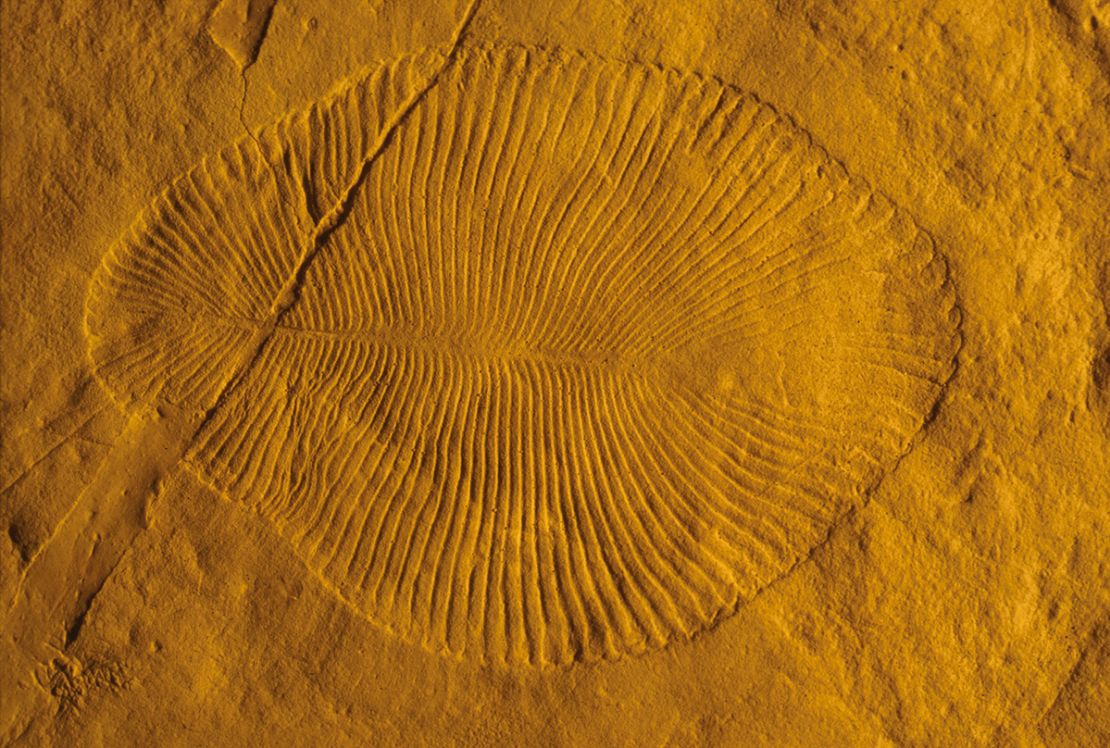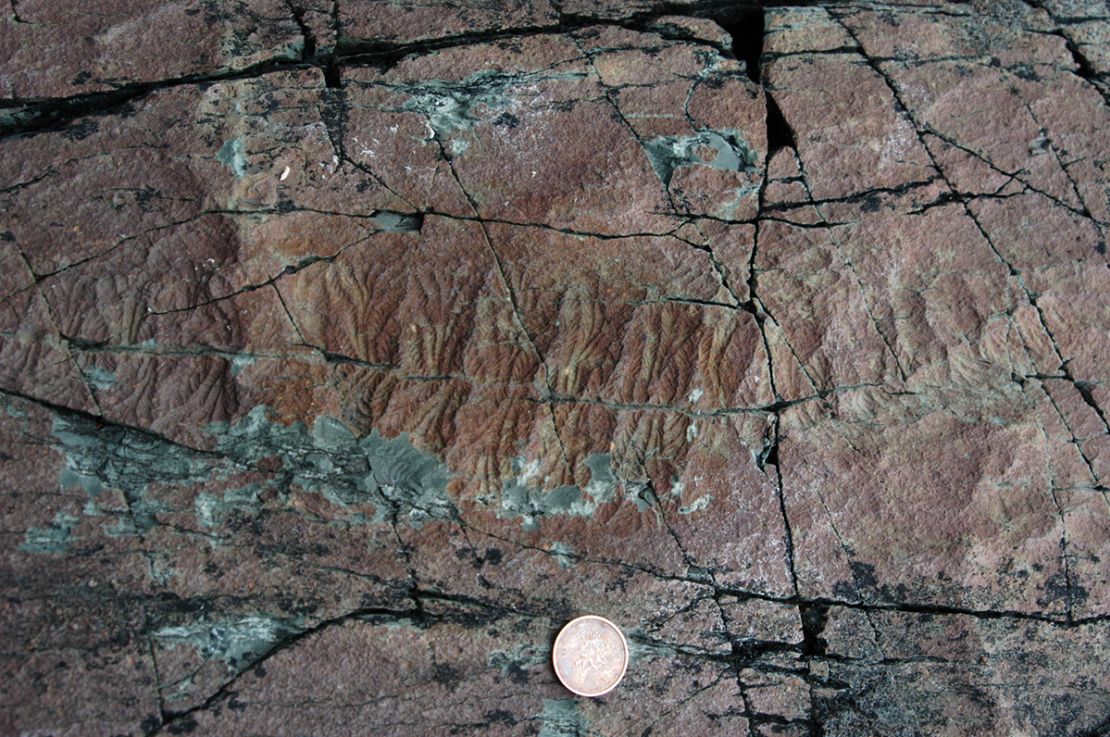Sign up for CNN’s Wonder Theory science newsletter. Explore the universe with news on fascinating discoveries, scientific advancements and more.
Earth’s magnetic field plays a key role in making our planet habitable. The protective bubble over the atmosphere shields the planet from solar radiation, winds, cosmic rays and wild swings in temperature.
However, Earth’s magnetic field almost collapsed 591 million years ago, and this change, paradoxically, may have played a pivotal role in the blossoming of complex life, new research has found.
“In general, the field is protective. If we had not had a field early in Earth history water would have been stripped from the planet by the solar wind (a stream of energized particles flowing from the sun toward Earth),” said John Tarduno, a professor of geophysics at the University of Rochester in New York and senior author of the new study.
“But in the Ediacaran, we had a fascinating period in the development of the deep Earth when processes creating the magnetic field … had become so inefficient after billions of years, that the field almost completely collapsed.”
The study, published in the journal Communications Earth & Environment on May 2, found that Earth’s magnetic field, which is created by the motion of molten iron in Earth’s outer core, was significantly weaker than its current strength for a period of at least 26 million years. The discovery of the sustained weakening of Earth’s magnetic field also helped resolve an enduring geological mystery about when Earth’s solid inner core formed.
This time frame lines up with a period known as the Ediacaran, when the very first complex animals emerged on the seafloor as the percentage of oxygen in the atmosphere and the ocean increased.
These weird animals barely resembled life today — squashy fans, tubes and doughnuts, and discs such as Dickinsonia, which grew up to 4.6 feet (1.4 meters) in size, and the sluglike Kimberella.
Prior to this time, life had been largely single-celled and microscopic. The researchers believe that a weak magnetic field may have led to an increase in oxygen in the atmosphere, allowing early complex life to evolve.

Uncovering the magnetic field’s near collapse
The intensity of Earth’s magnetic field is known to fluctuate over time, and crystals preserved in rock contain tiny magnetic particles that lock in a record of the intensity of Earth’s magnetic field.
The first evidence that Earth’s magnetic field weakened significantly during this period came in 2019 from a study of 565 million-year-old rocks in Quebec that suggested the field was 10 times weaker than today at that point.
The latest study collated more geological evidence that indicated the magnetic field weakened dramatically, with information contained in 591 million-year-old rock from a site in southern Brazil suggesting the field was 30 times weaker than today.
The weak magnetic field hadn’t always been that way: The team examined similar rocks from South Africa that dated back more than 2 billion years and found, at that point in time, the Earth’s magnetic field was as strong as it is today.
Unlike now, Tarduno explained, back then the innermost part of Earth was liquid, not solid, influencing the way the magnetic field was generated.
“Over billions of years that process is becoming less and less efficient,” he said.
“And by the time we get to the Ediacaran, the field is on its last legs. It’s almost collapsing. But then fortunately for us it got cool enough that the inner core started to generate (strengthening the magnetic field).”
The emergence of the earliest complex life that would have wafted along the seafloor at this time is associated with a rise in oxygen levels. Some animals can survive at low levels of oxygen, such as sponges and microscopic animals, but larger animals with more complex bodies that move need more oxygen, Tarduno said.
Traditionally, the rise in oxygen during this time has been attributed to photosynthetic organisms such as cyanobacteria, which produced oxygen, allowing it to build up in the water steadily over time, explained study coauthor Shuhai Xiao, a professor of geobiology at Virginia Tech.
However, the new research suggested an alternative, or complementary, hypothesis involving an increased loss of hydrogen to space when the geomagnetic field was weak.
“The magnetosphere shields the Earth from solar wind, thus holding the atmosphere to the Earth. Thus, a weaker magnetosphere means that lighter gases such as hydrogen would be lost from the Earth’s atmosphere,” Xiao added via email.
Tarduno said multiple processes could have been taking place at once.
“We do not challenge that one or more of these processes was happening concurrently. But the weak field may have allowed oxygenation to cross a threshold, aiding animal radiation (evolution),” Tarduno said.
Peter Driscoll, staff scientist at the Earth and Planets Laboratory at the Carnegie Institution for Science in Washington, DC, said he agreed with the study’s findings on the weakness of Earth’s magnetic field, but the claim that the weak magnetic field could have affected atmospheric oxygen and biological evolution was difficult to assess. He wasn’t involved with the study.
“It is hard for me to evaluate the veracity of this claim because the influence that planetary magnetic fields might have on climate is not very well understood,” he said via email.
Tarduno said that their hypothesis was “solid,” but proving a causative link could take decades of challenging work given how little is known about the animals that lived at this time.

Inner core mystery
The geological analysis also revealed telling details about the innermost part of Earth’s center.
Estimates on when the planet’s inner core may have solidified — when iron first crystallized at the center of the planet — once ranged from 500 million to 2.5 billion years ago.
The research on the intensity of Earth’s magnetic field suggests that the age of Earth’s inner core is on the younger end of that timescale, solidifying after 565 million years ago and allowing Earth’s magnetic shield to bounce back.
“The observations appear to support the claim that the inner core first nucleated soon after this time, pushing the geodynamo (the mechanism that creates the magnetic field) from a weak, unstable state into a strong, stable dipolar field,” Driscoll said.
Tarduno said the recovery of the field strength after the Ediacaran, with the growth of the inner core, was probably important in preventing a drying of water-rich Earth.
As for the bizarre animals of the Ediacaran, they had all disappeared by the following Cambrian Period, when the diversity of life exploded and the branches of the tree of life familiar today formed in a relatively short time.








